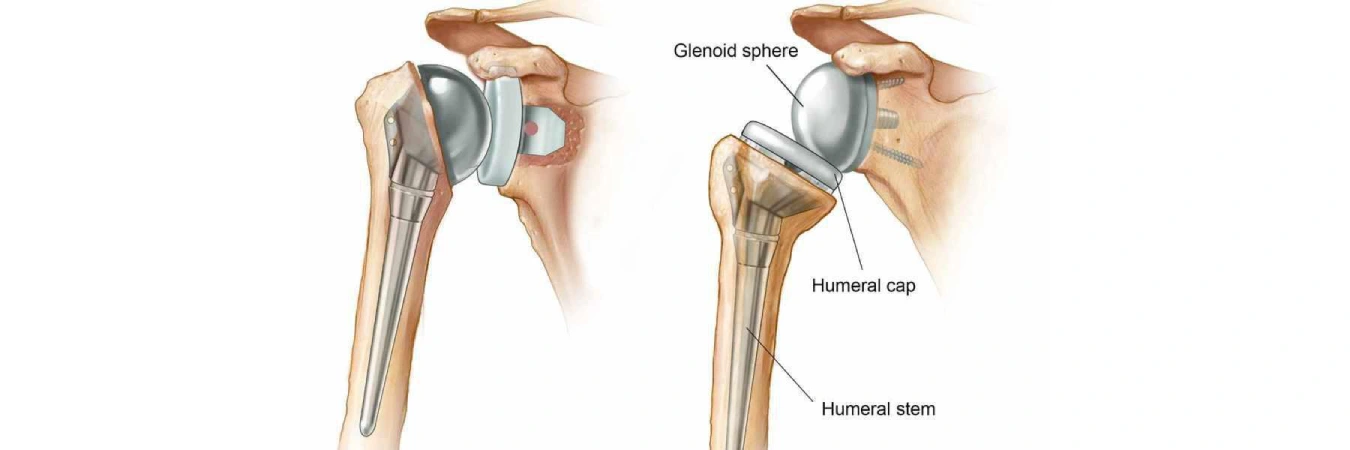Shoulder Replacement
Types of Shoulder Replacement Options:
1. Total Shoulder Replacement:
Commonly referred to as traditional shoulder replacement or arthroplasty, this procedure involves the replacement of the original ball-and-socket surfaces of the shoulder with prosthetics of similar shapes. Total shoulder replacement is a reliable option for alleviating severe shoulder arthritis. However, it may not be suitable for highly active individuals or those with damaged rotator cuff muscles.
2. Partial Shoulder Replacement:
In partial shoulder replacement, or hemiarthroplasty, the humeral head (upper arm bone) is replaced with a prosthetic ball while preserving the natural socket, known as the glenoid bone.
3. Reverse Shoulder Replacement:
Reverse shoulder replacement involves a reversal of the positions of the shoulder joint's ball and socket. It replaces the humerus's natural ball with a prosthetic socket, while the shoulder's original socket is fitted with a prosthetic ball. This procedure is suitable for individuals who are ineligible for traditional shoulder replacement due to damaged rotator cuffs. It alters the joint's center of rotation, allowing other muscles to compensate for the lack of rotator cuff function.

